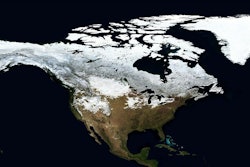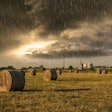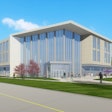Transcription of Feed & Grain Chat with Alan Raveling, OT architect for Interstates.
Elise Schafer, editor, Feed & Grain:Hi everyone and welcome toFeed & Grain Chat. I'm your host Elise Schafer, editor ofFeed & Grainmagazine. This edition of Feed & Grain Chat is brought to you by WATT Global Media and Feedandgrain.com. Feedandgrain.com is your source for the latest news, products and equipment information for the grain handling and feed manufacturing industries.
Today I'm joined on Zoom by Alan Raveling, OT architect forInterstates. Alan’s here to discuss how virtual and augmented reality might be used in feed mills of the future. Hi, Alan, how are you?
AlanRaveling,OTarchitect forInterstates:Hello, Elise. I'm doing well. Thanks for having me.
Schafer:是的,谢谢光临!让我们正确的我nto it. Now, most people think of virtual reality as solely for entertainment, but can you briefly overview how virtual or augmented reality works and give some examples of potential uses in feed and grain facilities?
Raveling:Yeah, absolutely. With virtual reality, it is often the same approach as a video game-type system, where you have a unit that covers your eyes, right. And the big point with virtual reality is that everything you see is computer generated, which means that someone, or a group or a team, has had to put all of those digital assets into a computer system.
Good applications for virtual reality would be expansion of a facility or perhaps a greenfield installation where the individuals can walk through a facility before it's even made to understand if equipment is in the right spot, is it conducive to efficient workflows, things like this.
Where I see the bigger benefit coming from is augmented reality. And with augmented reality, you have some digital objects overlaid on top of the real world, and this has many potential implications. One of the biggest uses is for maintenance and training.
If you have a person who needs to do some work on a motor, they can receive step-by-step information on how to service that motor with computer images and prompts shown directly on top of the actual motor that the person needs to work with.
The same thing can be used for training, where they're receiving prompts in real time based on what they're doing in the physical space and it provides a much more convenient way of doing that compared to reading a bunch of instructions and then trying to remember all those steps when you're having to do that work in the field.
Schafer:Great! So, what kind of benefits could virtual reality or augmented reality bring to a rural workforce?
Raveling:For a rural workforce, I think augmented reality can really help with some of these skill gaps that you may find in those particular areas where the individuals that are coming into these facilities may not have the technical capabilities that we would like to have them possess when working with the devices and the components and the equipment that are in these facilities.
增强现实技术可以提供一种方式training without having to send out people from a corporate office or bring in other individuals where that training can be done. In tandem with the remote resource, looking through the webcam or other video cameras system and prompting that individual on the next steps or what they should be doing.
It also is a force multiplier for diagnostics or troubleshooting where a tech on site can be the hands and the ears or the eyes of a remote resource, who is also receiving information digitally or through the system and can help that person onsite troubleshoot or resolve issues more quickly, more safely and provide some feedback on if things are going well or not well.
Schafer:So, while augmented reality has loads of potential, it's not very common today. What barriers to entry exist that need to be eased to clear the way for widespread adoption?
Raveling:With either augmented reality or virtual reality, the key thing that is holding back more widespread adoption is getting those digital assets integrated into the systems, and also for areas like feed and grain, there's a safety component, too, you know. It doesn't make much sense for someone to wear a full set of VR goggles when they're trying to work within a manufacturing facility, right? There's a safety issue there not being able to see what's in front of you.
Some of the other augmented reality glassware or systems are great for office environments or other areas like that, but maybe aren't as robust as they need to be for feed and grain or other types of facilities like this.
In addition, I think there's also a cost component where the expense of these systems may not justify the benefits of them today, but as augmented reality becomes more ubiquitous in the future, and where competitors enter this marketplace, the hope is that with competition comes lower prices and a little bit better choice on what you need vs. what's been made available right now.
So, within the next 5 to 10 years, the conversation will change where the cost of entry for an AR system is much lower and the benefits are much higher due to the additional capabilities that are coming into the market during that time.
Schafer:Well, it certainly sounds like something our viewers will be looking into in the future.
Raveling:Absolutely.
Schafer:Well, thank you for your insights today, Alan!
Raveling:Thank you.
Schafer:That's all for thisFeed & Grain Chat. Thank you for watching and I hope to see you next time!
Editor’s Note:If you'd like to see more videos like this, subscribe to ourYouTube channel, sign up for ourIndustryWatch daily eNewsletteror you can come directly toFeedandgrain.comto find videos on our website.
In this Feed & Grain Chat, Alan Raveling, OT architect forInterstates,discusses potential applications for augmented reality in feed and grain operations, the benefits for a rural workforce and current barriers to widespread adoption.






















